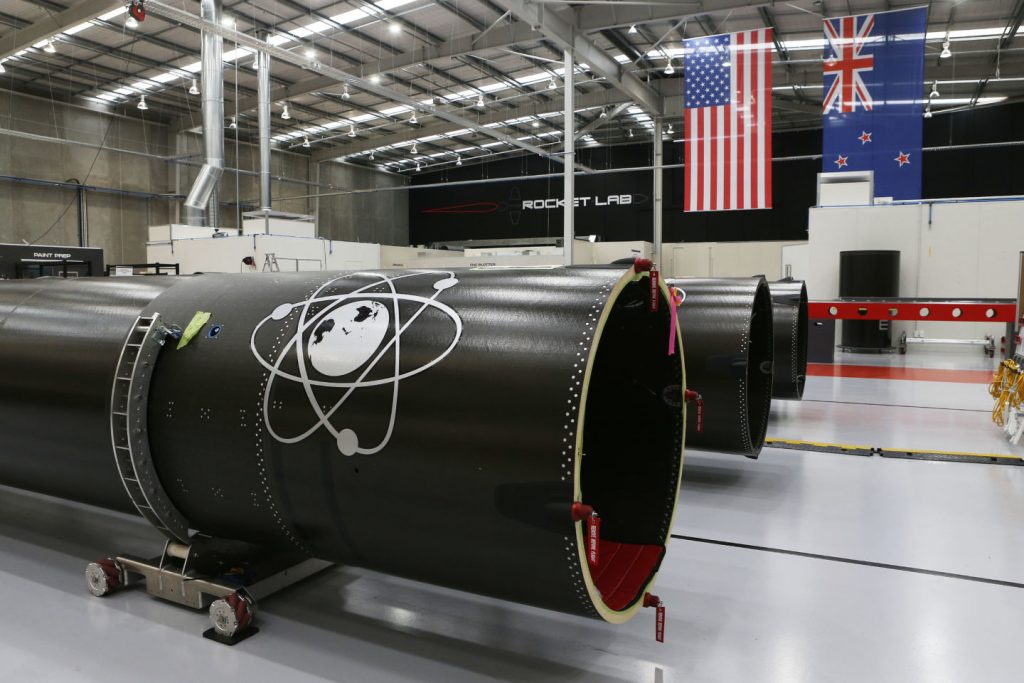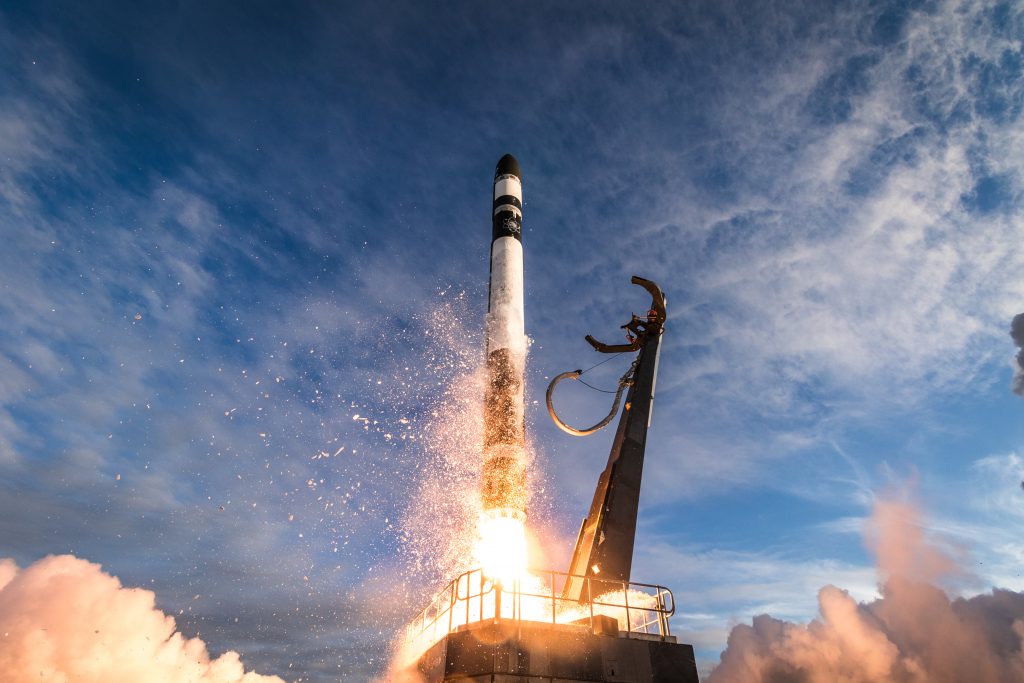The Countdown to the “Don’t Stop Me Now” Mission Has Begun for Rocket Labs
Space is one of the most attractive frontiers for humans and 2020 has been one of the most exciting years for space exploration. For starters, companies are sending rockets to space, uncrewed rockets that is, at least for now, as they prepare for future missions to the Moon and later on, to Mars. March is not over yet and we have already witnessed 17 successful rocket launches to orbit. And space technology company Rocket Lab is quickening the pace, now planning its second mission set to launch by the end of the month.
Called “Don’t Stop Me Now”, the next mission launch will deploy payloads for the National Aeronautics and Space Administration (NASA), the National Reconnaissance Office (NRO) and the University of New South Wales (UNSW) Canberra Space.
Founded in New Zealand in 2006 by engineer Peter Beck, Rocket Lab is well known for 3D printing lightweight, high-performance rocket engines, like the Rutherford. The payload on the next mission will launch aboard the company’s Electron rocket, Rocket Lab’s twelfth Electron launch since the company began launches in May 2017.
Overall, this mission will enable university research into Earth’s magnetic field, support the testing of new smallsat comms architecture, and demonstrate a fast, commercial approach for getting government small satellites into space, which helps advance scientific and human exploration.
Rocket Lab’s next launch will be the second for the NRO, a major US intelligence agency, the first one was on board the company’s last dedicated mission, “Birds of a Feather”, which was launched aboard a Rocket Lab Electron rocket on January 31 from Rocket Lab Launch Complex 1, in New Zealand.
Beck said the mission is a great example of the kind of cutting-edge research and fast-paced innovation that small satellites are enabling.
“It’s a privilege to have NASA and the NRO launch on Electron again, and we’re excited to welcome the UNSW onto our manifest for the first time, too,” he went on. “We created Electron to make getting to space easy for all, so it’s gratifying to be meeting the needs of national security payloads and student research projects on the same mission.”
According to the company, the rideshare mission will launch several small satellites, including the ANDESITE (Ad-Hoc Network Demonstration for Extended Satellite-Based Inquiry and Other Team Endeavors) satellite created by electrical and mechanical engineering students and professors at Boston University (BU). The satellite will launch as part of NASA’s CubeSat Launch Initiative (CSLI) and will conduct a groundbreaking scientific study into Earth’s magnetic field.
Once in space, the ANDESITE satellite will initiate measurements of the magnetosphere with onboard sensors, later releasing eight pico satellites carrying small magnetometer sensors to track electric currents flowing in and out of the atmosphere, a phenomenon also known as space weather. These variations in electrical activity racing through space can have a big impact on our lives here on Earth, causing interruptions to things like radio communications and electrical systems.
The ANDESITE satellite follows on from Rocket Lab’s first Educational Launch of Nanosatellites (ELaNa) launch for NASA, the ELaNa-19 mission, which launched a host of educational satellites to orbit on Electron in December 2018, as part of an initiative to attract and retain students in the fields of science, technology, engineering and mathematics.
The mission also carries three payloads designed, built and operated by the NRO. The mission was procured under the agency’s Rapid Acquisition of a Small Rocket (RASR) contract vehicle. RASR allows the NRO to explore new launch opportunities that provide a streamlined, commercial approach for getting small satellites into space, as well as provide those working in the small satellite community with timely and cost-effective access to space.
“We’re excited to be partnering with Rocket Lab on another mission under our RASR contract,” indicated Chad Davis, Director of NRO’s Office of Space Launch. “This latest mission is a great example of the collaborative nature of the space community and our goal as space partners to procure rideshare missions that not only meet our mission needs but provide opportunities for those working with smallsats to gain easy access to space.”
A statement by the company also suggests that the ANDESITE and NRO payloads will be joined on the mission by the M2 Pathfinder satellite, a collaboration between the UNSW Canberra Space and the Australian Government. The M2 Pathfinder will test communications architecture and other technologies that will assist in informing the future space capabilities of Australia. The satellite will demonstrate the ability of an onboard software-based radio to operate and reconfigure while in orbit.
The Spacecraft Project Lead at UNSW Canberra and space systems engineer, Andrin Tomaschett, revealed that “we’re very excited to be launching M2 Pathfinder with Rocket Lab who have been so very flexible in accommodating our spacecraft specific needs, let alone the ambitious nine-month project timeframe. The success of this spacecraft will unlock so much more, for our customers and for Australia, by feeding into the complex spacecraft projects and missions our team is currently working on.”
While NASA Launch Services Program (LSP) ELaNa Mission Lead, Scott Higginbotham, considered that through the CubeSat Launch Initiative, NASA engages the next generation of space explorers, providing university teams, like ANDESITE, with real-life, hands-on experience in conducting an actual space research mission in conjunction with NASA.
Named in recognition of Rocket Lab board member and avid rock band Queen fan Scott Smith, who recently passed away, the mission will have a 14-day launch window that opens on March 27, at New Zealand’s Māhia Peninsula. The best way audiences can view the launch is via Rocket Lab’s live video webcast: a live stream will be made available approximately 15 to 20 minutes prior to the launch attempt. If you are a serial space observer and follow all news relating to 3D printed rockets, launches, commercialization of low Earth orbit, and more, stay up to date with our articles at 3DPrint.com.
The post The Countdown to the “Don’t Stop Me Now” Mission Has Begun for Rocket Labs appeared first on 3DPrint.com | The Voice of 3D Printing / Additive Manufacturing.
3D Printing News Sliced: Rocket Lab, David Bowie, Resident Evil 2
3D Printing Industry Review of the Year January 2018
3D printing news Sliced Additive Industries, PyroGenesis, axial3D, Rocket Lab
Rocket Lab Successfully Launches First Mission for NASA
Rocket Lab’s year has been bookended nicely with successful launches. The startup, which uses 3D printing for its rockets’ primary components, including the engine, launched its second rocket and reached orbit for the first time in January. And yesterday, just a month after its first successful commercial flight, Rocket Lab launched its first mission for NASA, deploying 13 CubeSat satellites into space. That makes 24 total satellites that Rocket Lab has launched this year – and the company is looking at a future of sending up many, many more.
 On Sunday December 16th at 6:33 UTC, Rocket Lab’s Electron Launch vehicle successfully lifted off from the Rocket Lab Launch Complex 1 on New Zealand’s Māhia Peninsula. After reaching an elliptical orbit, Electron’s Curie engine-powered kick stage separated from the rocket’s second stage before reaching a circular orbit about 500 km above Earth. By 56 minutes into the mission, the 13 CubeSats on board had been individually deployed to their designated orbits.
On Sunday December 16th at 6:33 UTC, Rocket Lab’s Electron Launch vehicle successfully lifted off from the Rocket Lab Launch Complex 1 on New Zealand’s Māhia Peninsula. After reaching an elliptical orbit, Electron’s Curie engine-powered kick stage separated from the rocket’s second stage before reaching a circular orbit about 500 km above Earth. By 56 minutes into the mission, the 13 CubeSats on board had been individually deployed to their designated orbits.
The mission has been named “Educational Launch of Nanosatellites (ELaNa)-19,” and it’s the first mission to ever carry NASA CubeSats on their own dedicated ride on a commercial launch vehicle. Normally, small satellites only make it into space on larger launch vehicles that are going up for different reasons, meaning that the owners of the small satellites don’t always get to be picky about orbit locations or timing. Rocket Lab’s goal is to give small satellite customers more options and more control, with the ability to choose when they launch and where they go.
“The ELaNa-19 mission was a significant one for NASA, the Rocket Lab team and the small satellite industry overall. To launch two missions just five weeks apart, and in the first year of orbital flights, is unprecedented. It’s exactly what the small satellite industry desperately needs, and Rocket Lab is proud to be delivering it. Regular and reliable launch is now a reality for small satellites. The wait is over,” said Rocket Lab CEO and founder Peter Beck. “We’re providing small satellite customers with more control than they’ve ever had, enabling them to launch on their own schedule, to precise orbits, as frequently as they need to.”
The CubeSats have been assigned various research projects; one, for example, will measure radiation levels in the Van Allen belts to help researchers better understand possible effects on spacecraft. Another has been designed to demonstrate the effectiveness of small, 3D printed robotic arms, and another will test technology for a new solar-sailing system that could allow small spacecraft to explore deep space.
“The CubeSats of ELaNa-19 represent a large variety of scientific objectives and technology demonstrations,” said NASA ELaNa-19 Mission Manager Justin Treptow. “With this the first launch of a Venture Class Launch Service on the Rocket Lab Electron, NASA now has an option to match our small satellite missions with a dedicated small launch vehicle to place these satellites in an optimal orbit to achieve big results.”
The next Electron rocket launch will take place from Launch Complex 1 in January 2019. 2019 could also see the first launches from US soil, as Rocket Lab has announced that it also plans to fly from the Mid-Atlantic Regional Spaceport in Virginia. We expect 3D printing to play a decisive role in the development of launch vehicles, space vehicles, and structures in space. In repairing space vehicles and passengers 3D printing will also play a crucial role. The future of 3D printing and the space industry are truly intertwined and Rocket Labs is an early success story.
You can watch the launch below:
Discuss this and other 3D printing topics at 3DPrintBoard.com or share your thoughts below.
[Images: Rocket Lab]
USC Viterbi 3D printed engines are building rocket scientists of the future
3D Printing News Sliced: Senvol, Betatype, Additive Industries, Hasso-Plattner Institute
Rocket Lab and its 3D Printed Rockets Look Toward a Prolific Future

Rocket Lab New Premesis Imagery, Auckland, 11 October 2018. [Image: William Booth / www.photosport.nz]
Rocket Lab started off 2018 with quite a bang, launching its partially 3D printed Electron rocket from its New Zealand launch site in January. This was the second launch and first successful orbital mission for the rocket, and the company is now gearing up to launch many more rockets – a couple more this year, and then 16 next year. Earlier this month, Rocket Lab opened a second rocket development lab and production facility in Auckland, New Zealand, and this week the company announced the location of its second launch site, which will be in Wallops Island, Virginia. Rocket Lab hopes to have the site operational in about a year.
“For us, the first big step was getting to orbit,” said Rocket Lab CEO Peter Beck. “We succeeded with that. The next big step is scaling facilities to meet demand. We’re not focusing on the next rocket. We’re focusing on the next 100 rockets.”

Rocket Lab New Premesis Imagery, Auckland, 11 October 2018. [Image: William Booth / www.photosport.nz]
For the remainder of 2018, however, Rocket Lab is focusing on the next two rockets. Its first full commercial mission, dubbed It’s Business Time, is scheduled to launch in November, and in December a flight for NASA will take off carrying 10 CubeSats.
Rocket Lab will continue to build its 3D printed Rutherford engines, as well as electronic guidance systems, at its main production facility in Southern California. The new Auckland facility will focus on building fuel tanks and rocket cores. Rockets launching from New Zealand will eventually be integrated at facilities there, and rockets launching from Virginia will be integrated there. Rocket Lab won’t be shipping entire Electron boosters across the ocean, but it will be sending components, and the two facilities combined will allow the company to build up to 52 Electron rockets per year, launching once per week.
Rocket Lab plans to invest about $20 million into the new facility at Wallops, which will be located at the Mid-Atlantic Regional Spaceport. According to Beck, the company is looking at additional sites around the world as well.
The Electron rocket has a payload of 150kg to 225kg, and is boostable to a 500km sun-synchronous orbit. Rocket Lab faces stiff competition from a large number of other companies looking to deliver small payloads into outer space, but Beck believes that the company has an advantage from all that it has learned: that things like regulation, production facilities, and launch pads matter just as much if not more than the rocket itself.
“This is the thing,” he said. “It’s one thing to have a couple of hot fires and do a couple of suborbital launches and whatnot. For us, just going to orbit was a good milestone, but going to orbit once is just the start. The amount of effort that we’ve invested the last nine months, really, it’s been just extraordinary.”

Rocket Lab New Premises Imagery, Auckland, 11 October 2018. [Image: William Booth / www.photosport.nz]
Rocket Lab certainly has mustered a lot of effort, and for that fact alone, it’s likely to stay at the front of the crowd of companies jostling to get their small rockets into space. While determination alone doesn’t guarantee success, determination backed by a great deal of planning and capital is a much better bet, and Rocket Lab has shown itself to be willing and able to put forward plenty of both.
[Source: Ars Technica]




